Wiring of power factor relay on LV and MV side (circuit diagrams)
In order to measure electrical power the relay needs to receive the line voltage and current from a current transformer (CT) installed close to the metering point, if possible. To measure reactive power at the power factor relay especially, it… Read more
Mar 31, 2017 | By Edvard Csanyi
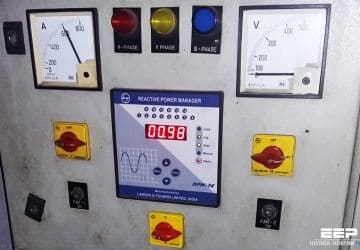
Five protection relay types used to detect grid disturbances and isolating
Consider a medium voltage distribution system having local generation (e.g., captive power generation) as shown in figure 1 which is also synchronized with the grid. During grid disturbance, if plant generators are not successfully isolated from the grid, they also sink… Read more
Mar 29, 2017 | By Edvard Csanyi
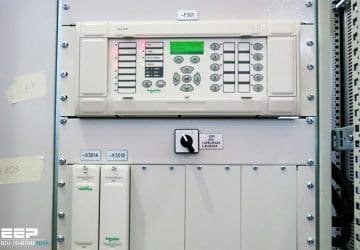
Top six solutions to achieve a high level of energy efficiency in buildings
Energy efficiency in commercial buildings involves providing a given level of performance, cost, quality, availability, and comfort at a minimal level of energy usage throughout the lifecycle of a given asset or process. Generally speaking, energy efficiency involves reducing energy… Read more
Mar 27, 2017 | By Edvard Csanyi

The analysis of four network schemes in terms of reliability and protection
Before sizing an electric network, the single-line diagram of the electric network must be defined on the basis of: Load – it is considered fundamental to establish the true user and service requirements these are destined for, in terms of quality, availability… Read more
Mar 24, 2017 | By Edvard Csanyi
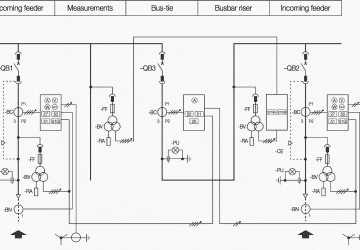
Generator synchronizing check protective function (ANSI 25 code)
One of the easiest way to damage a generator is to synchronize or parallel out of phase with the electrical system. Out-of-phase synchronizing operations can damage or reduce the remaining life of generator rotors and stationary components. Angular differences as… Read more
Mar 22, 2017 | By Edvard Csanyi

Installation, protection and connection of capacitor banks
In an low voltage electrical installation, capacitor banks can be installed at three different levels: Global installation Segment (or group) installation Individual (or single) installation After installation ways, we’ll discuss about protection and connection of capacitors banks. This installation type assumes… Read more
Mar 20, 2017 | By Edvard Csanyi

What is the complex power and how it figures in power analysis
Considerable effort has been expended over the years to express power relations as simply as possible. Power engineers have coined the term complex power, which they use to find the total effect of parallel loads. Complex power is important in… Read more
Mar 17, 2017 | By Edvard Csanyi
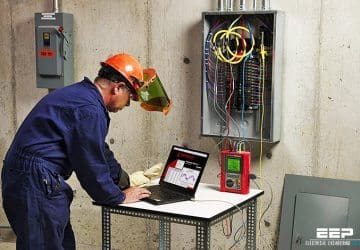
PLC power supply and safety (emergency) circuits requirements
The source for a PLC power supply is generally single-phase and 120 or 240 VAC. If the controller is installed in an enclosure, the two power leads (L1 hot and L2 common) normally enter the enclosure through the top part… Read more
Mar 15, 2017 | By Edvard Csanyi

Why overmotoring an application is not such a good idea
In many instances, the practice has been to overmotor an application, i.e., to select a higher-horsepower motor than necessary. The disadvantages of this practice are: Lower efficiency Lower power factor Higher motor cost Higher controller cost Higher installation costs Let’s… Read more
Mar 13, 2017 | By Edvard Csanyi

Three performance factors you must consider when sizing batteries
Batteries need to be sized correctly to be able to feed the required load for the required time, and a number of factors need to be decided to be able to optimize the battery for the duty expected. Some of… Read more
Mar 10, 2017 | By Edvard Csanyi
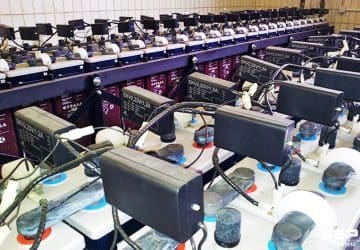
Never underestimate electrostatic discharge (ESD) while working with data networking equipment
Let’s start with basics you probably already know, but nevertheless. It’s important to explain the basics first. Electrostatic Discharge (or ESD) refers to the transfer of electrostatic charge between bodies at varied voltages that is caused by direct contact or… Read more
Mar 08, 2017 | By Edvard Csanyi

The essentials of synchronous machines in power distribution networks
Synchronous machines can be used as generators or motors. They are of 3-phase construction, even though some special exceptions can be found. A bulk of the applications are within power ranges roughly varying from a megawatt level to several tenths… Read more
Mar 06, 2017 | By Edvard Csanyi

Voltage drop calculation methods with examples explained in details
What we call “voltage drop” is really just the differential in voltage between where the installation started and where the receptor was connected. The primary concern with voltage drop is that, under steady-state conditions of typical load, the voltage at the… Read more
Mar 03, 2017 | By Edvard Csanyi
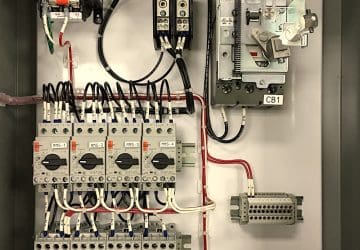
Performing power factor test on dry-type transformer during commissioning
The power factor test is a maintenance test used to determine the insulation system dielectric power loss by measuring the power angle between an applied AC voltage and the resultant current. Power factor is defined as the ratio of the… Read more
Mar 01, 2017 | By Edvard Csanyi


